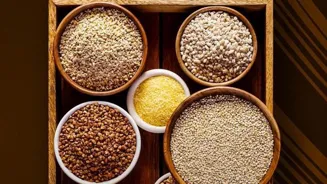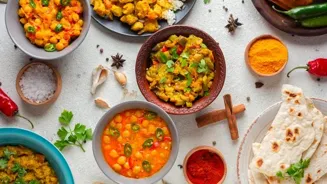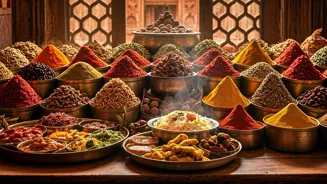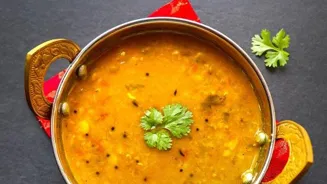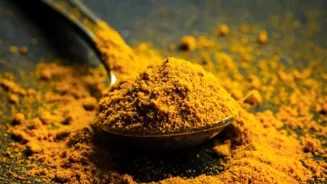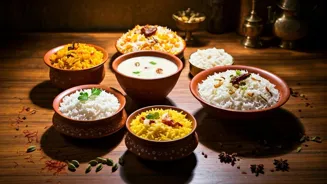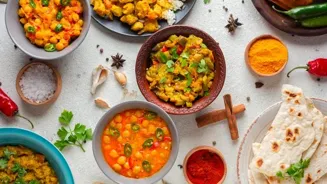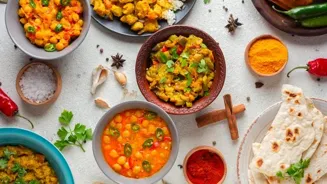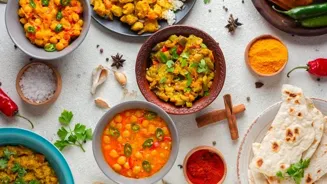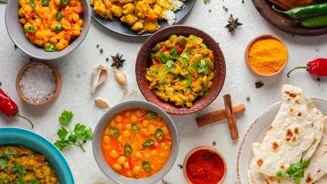Discover the diverse world of Indian rice - from fragrant Basmati to versatile Sona Masuri and more! Let's explore together
India, the land of spices and vibrant culture, boasts a remarkable diversity in
its staple food: rice. From the snow-capped Himalayas to the coastal plains, different regions cultivate unique varieties of rice, each with its own distinct flavour, aroma, and texture.
For the home cook and culinary enthusiast alike, understanding these differences is key to unlocking the full potential of Indian cuisine. This guide provides a peek into the world of Indian rice, helping you choose the perfect grain for your next culinary adventure.
Let's dive in and explore the fascinating world of Indian rice!
Basmati rice: fragrant, slender grains ideal for biryanis and pulaos
Basmati rice, perhaps the most well-known Indian rice globally, reigns supreme for its long, slender grains and distinct aromatic fragrance. Grown primarily in the foothills of the Himalayas, Basmati translates to "fragrant" or "queen of fragrance," a fitting moniker for this prized grain.
Upon cooking, Basmati grains elongate, remaining separate and fluffy, creating a delightful mouthfeel. There are two major types of Basmati rice, white and brown rice with a difference in husk. Brown basmati is a healthier substitute due to the presence of intact husk.
Due to these properties, they are the perfect choice for biryanis, pulaos, and other rice dishes where taste and presentation matter equally. The distinctive aroma also elevates common, everyday dishes. Always remember to rinse well before cooking it for the best aromatic experience.
Sona Masuri rice: South Indian staple, light, versatile, affordable
Moving towards another type of Indian rice, we meet Sona Masuri, a medium-grain rice that is a staple in South Indian households. Lighter than Basmati, the flavour is subtler and it is easily digestible.

It's versatile, fitting into dishes like idlis, dosas, or simple steamed rice to accompany sambar and rasam. The affordability of Sona Masuri makes it accessible for daily consumption. It is grown primarily in the Andhra Pradesh and Telangana region of India.
It is valued for its light and fluffy texture when cooked. It absorbs flavours well, making it the perfect choice for dishes that relies on a sauce or curry. Due to its high starch content, proper washing before being cooked is a must, to remove excess starch and prevent stickiness.
Explore Gobindobhog rice from eastern India, a sweet, aromatic and sticky rice used in festive dishes
Now, let's take a journey to the eastern part of India and explore Gobindobhog rice. This short-grain, aromatic rice is mainly cultivated in West Bengal and is favoured for its sweet, buttery flavour.
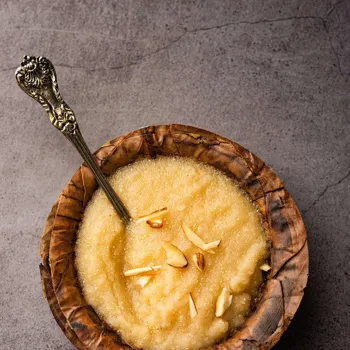
Gobindobhog rice holds cultural significance and is often used in festive dishes and religious offerings. The grains are sticky in nature, resulting in a creamy and rich texture that is a treat to the palate. It is used to make desserts like payesh (rice pudding) and pulao.
It's delightful fragrance adds an extra touch of flavour to your culinary experience. Its unique properties make it a sought after choice for those seeking a special and flavourful rice variety. It is generally used for sweets and needs to be cooked carefully.
Explore the benefits of nutrient-rich brown rice over white rice
Next, we venture into the world of brown rice, a whole grain option with a nutty flavour and chewy texture. Unlike white rice, brown rice retains the bran and germ layers, packed with nutrients like fiber, vitamins, and minerals.
Brown rice takes longer to cook compared to white rice varieties, but the added health benefits make it a worthwhile choice. It can be used in a variety of dishes, from salads and stir-fries to hearty bowls and pilafs.
Experiment with different seasoning and vegetables to create a nutritious and satisfying dish, and remember to soak it before cooking it, to shorten the cooking cycle. Brown rice offers a delicious and wholesome way to enjoy this adaptable staple.
Indrayani rice: fragrant, soft texture, perfect for Indian dishes
Then comes, Indrayani rice, a fragrant variety mainly grown in the Maharashtra region. It is known for its soft texture and unique aroma, resembling that of Basmati but with a slightly stickier consistency. Indrayani rice is well-suited for dishes like steamed rice, khichdi, and rice-based desserts.
Its easy digestibility and pleasing aroma make it a popular choice for everyday meals. It also needs pre-soaking, and is a low cost choice to Basmati. It offers flavour, aroma, and a sticky texture, adding diversity to Indian cuisine.
Consider incorporating Indrayani rice into your diet for a healthy alternative to other rice varieties. It is generally used for sweet dishes and is easy to cook.
Jeera rice: a fragrant, versatile Indian dish elevating any meal
Finally, let's not forget Jeera rice, also known as cumin rice. This simple dish is a staple in Indian cuisine and is made by flavouring rice with cumin seeds and herbs. Any type of long-grain rice can be used for Jeera rice, but Basmati is commonly preferred for its fragrance and slender grains.
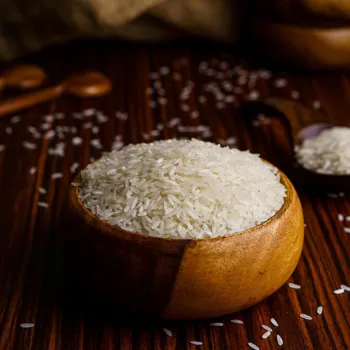
It is a good choice for lunch and breakfast, that can be either cooked through frying or by boiling. Jeera rice is a versatile accompaniment to dals, curries, and grilled vegetables. Its flavourful and aromatic profile elevates any meal. It is highly versatile, and its preparation is simple.
With just a few ingredients and a bit of skill, one can create a tasty and satisfying dish that is sure to please.
AI Generated Content. Glance/InMobi shall have no liability for the content